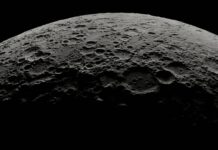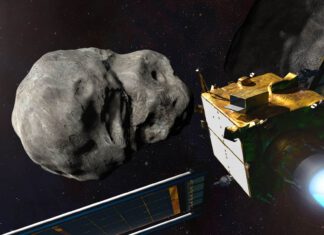
NASA’s DART Mission
The NASA mission that altered the course of the moonlet Dimorphos has proven that it is certainly not the only satellite circling around a space rock.
Planetary Satellites
We are aware that planets can host moons. For example, our Earth has one moon, while Saturn boasts 146 recognized moons, making it the planet with the largest collection in our solar system. But space rocks can also have companions. Take, for instance, the moonlet Dimorphos, which orbits the asteroid Didymos and was moved off its course by NASA’s DART mission. However, how unique is it that space rocks have moonlets?
Binary Asteroids
It turns out this phenomenon may be less remarkable than we originally thought. Space telescope Gaia has discovered potential moonlets around more than 350 previously known asteroids. If this discovery is confirmed, it would add 352 new binary asteroids to our catalog, nearly doubling the number of known space rocks with moons.
Challenges in Discovery
It is not surprising that few moonlets around space rocks have been found until now. “Binary asteroids are difficult to identify because they are often small and distant,” explains Luana Liberato, the lead researcher of the new study. “We expect that less than one-sixth of all asteroids have a companion. So far, we have found only about 500 out of an estimated one billion asteroids in binary systems. Our study suggests that many more moons are waiting to be discovered.”
The Role of Gaia
Gaia’s unique capability to monitor the entire sky has led to several significant discoveries in the field of asteroids since its launch in 2013. In its third data release, Gaia precisely determined the positions and movements of more than 150,000 asteroids (as illustrated in the accompanying image).
This precision allowed scientists to search further for asteroids exhibiting the typical ‘wobble’ caused by the gravitational pull of an orbiting moon, akin to a binary star. This led researchers to identify hundreds of asteroids with natural satellites.
Astronomical Interests
Why are astronomers so interested in asteroids and their moonlets? These space rocks provide valuable insights into the formation and evolution of our solar system. Binary systems are even more fascinating as they give us the opportunity to study how different celestial bodies form, collide, and interact in space.
Future Data Releases
Gaia has released multiple datasets to date. In 2016, researchers introduced the first dataset, containing the distances and movements of two million stars. The second dataset followed in 2018, revealing the 3D positions, 2D movements, brightness, and color of over 1.3 billion stars. The third data release came in 2020, refining the orbits of over 150,000 discovered asteroids as part of the Focused Product Release of that year. And this is just the beginning. We can expect even more asteroid orbits in Gaia’s next data release, anticipated mid-2026.
Uncovering Cosmic Secrets
Thanks to the space telescope, we are continually expanding our knowledge of our solar system. “Gaia has proven to be a remarkable explorer of asteroids,” says Timo Prusti of ESA. “The telescope tirelessly works to unlock the universe’s secrets, both within and beyond our solar system. This latest discovery highlights how each data release from Gaia marks a significant improvement in data quality and showcases the exciting new scientific insights enabled by the mission.”
Future Missions
ESA’s commitment to studying asteroids is evident with the upcoming launch of the Hera mission later this year. Hera builds upon NASA’s DART mission, which rammed Dimorphos in 2022 to test whether we can deflect asteroids. Hera will investigate Dimorphos post-impact. Remarkably, it is the first mission to visit a binary asteroid. With missions like Hera on the horizon, we can expect to learn much more about asteroids and their moons, further enhancing our understanding of the cosmos.











